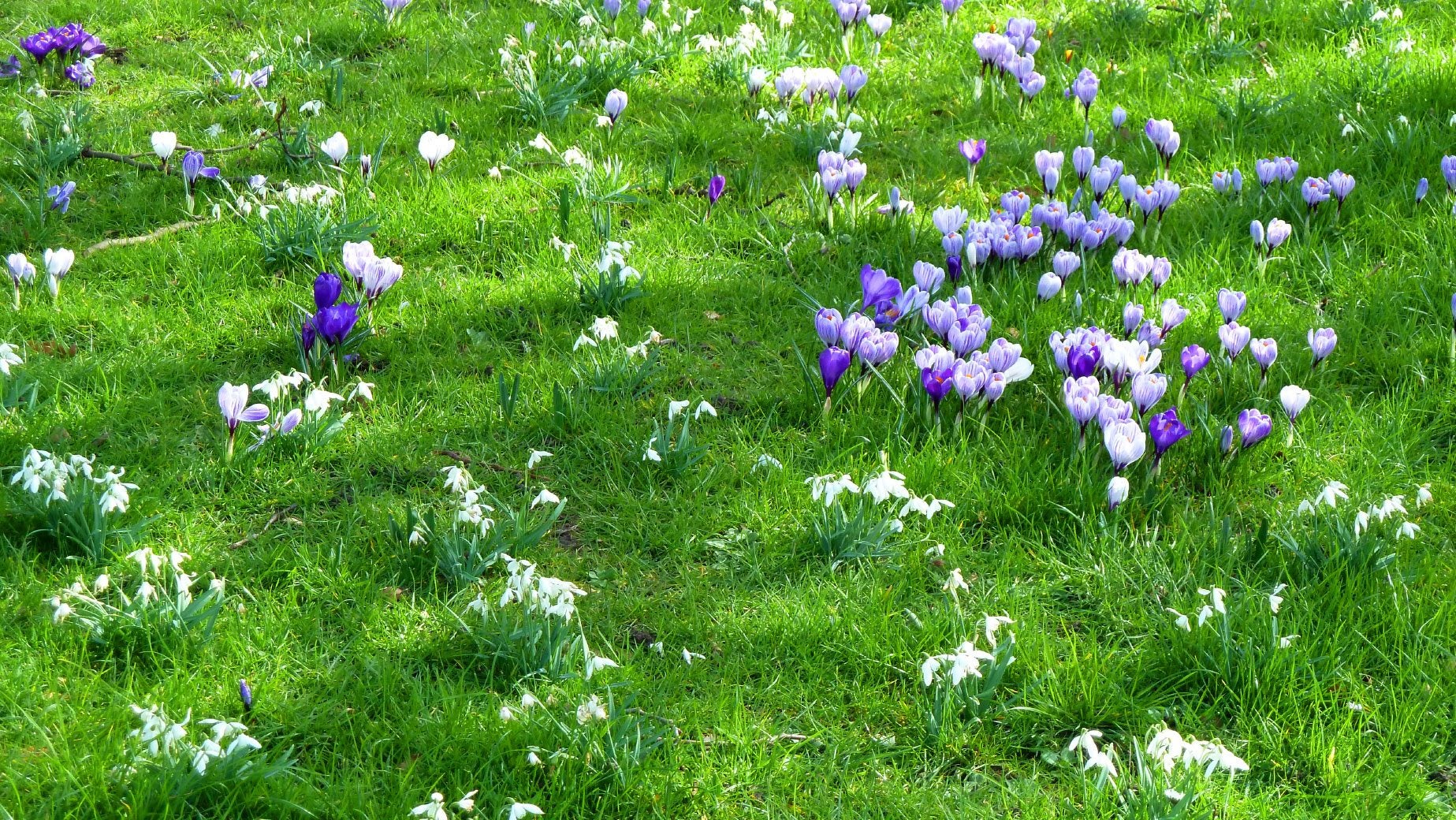Crocus In Lawns: Tips For Growing Crocus In The Yard


Early-spring crocus have much to offer, and they needn't be restricted to the flower bed. Just imagine a lawn filled with blooms in colors such as bright purple, white, gold, pink, or pale lavender. Once established, the thick carpets of color require surprisingly little care.
Growing Crocus in Lawns
If you're thinking about growing crocus in the yard, there are several things to consider. If you like a lawn that is luxurious, lush, and heavily fertilized, planting handfuls of crocus may be a waste of time because the bulbs have little chance of competing with a stand of thick grass. If you're fussy about your lawn and you like it perfectly manicured, you may not be happy with the little guys popping up all over the place. Keep in mind that you won't be able to mow for a few weeks, or until the tops of the crocus turn yellow. If you mow too soon, the bulbs may not have the get up and go for another season of blooming because the foliage absorbs sunlight that converts to energy. Crocus is ideally suited for a spot where grass is sparse-- possibly a spot under a deciduous tree or in a forgotten patch of lawn.
How to Grow Crocus Lawns
Plan (and plant) your crocus lawn carefully; with any luck, the bulbs will last for several years. Plant the bulbs when the ground is cool in autumn, six to eight weeks before the first hard frost. Choose a spot where the soil drains well. If you're planting crocus bulbs in existing turf, you can lift the turf and roll it back carefully. Dig a little compost or manure into the exposed soil, then plant the crocus bulbs. Roll the turf back into place and tamp it so it makes firm contact with the ground. If you're thinking that naturalizing crocus bulbs will provide a more natural appearance, you're right. For a truly natural look, just scatter a handful of bulbs and plant them where they fall. Steer clear of perfect rows.
Crocus Varieties for Lawns
Small, early blooming crocus varieties have fine-textured foliage that blends well with lawn grass. Additionally, they tend to compete with turf more effectively than larger, late-blooming types. Many gardeners who have successfully grown crocus lawns recommend C. Tommasinianus, often known as “Tommies.” This small, star-shaped variety is available in several colors, including “Pictus,” which provides delicate lavender bulbs with purple tips, or “Roseus” with blooms that are pinkish lavender. “Ruby Giant” blooms are reddish purple, “Lilac Beauty” boasts pale lavender crocus with pink inner petals, and “Whitewell Purple” displays reddish purple blooms.
Sign up for the Gardening Know How newsletter today and receive a free copy of our e-book "How to Grow Delicious Tomatoes".

A Credentialed Garden Writer, Mary H. Dyer was with Gardening Know How in the very beginning, publishing articles as early as 2007.